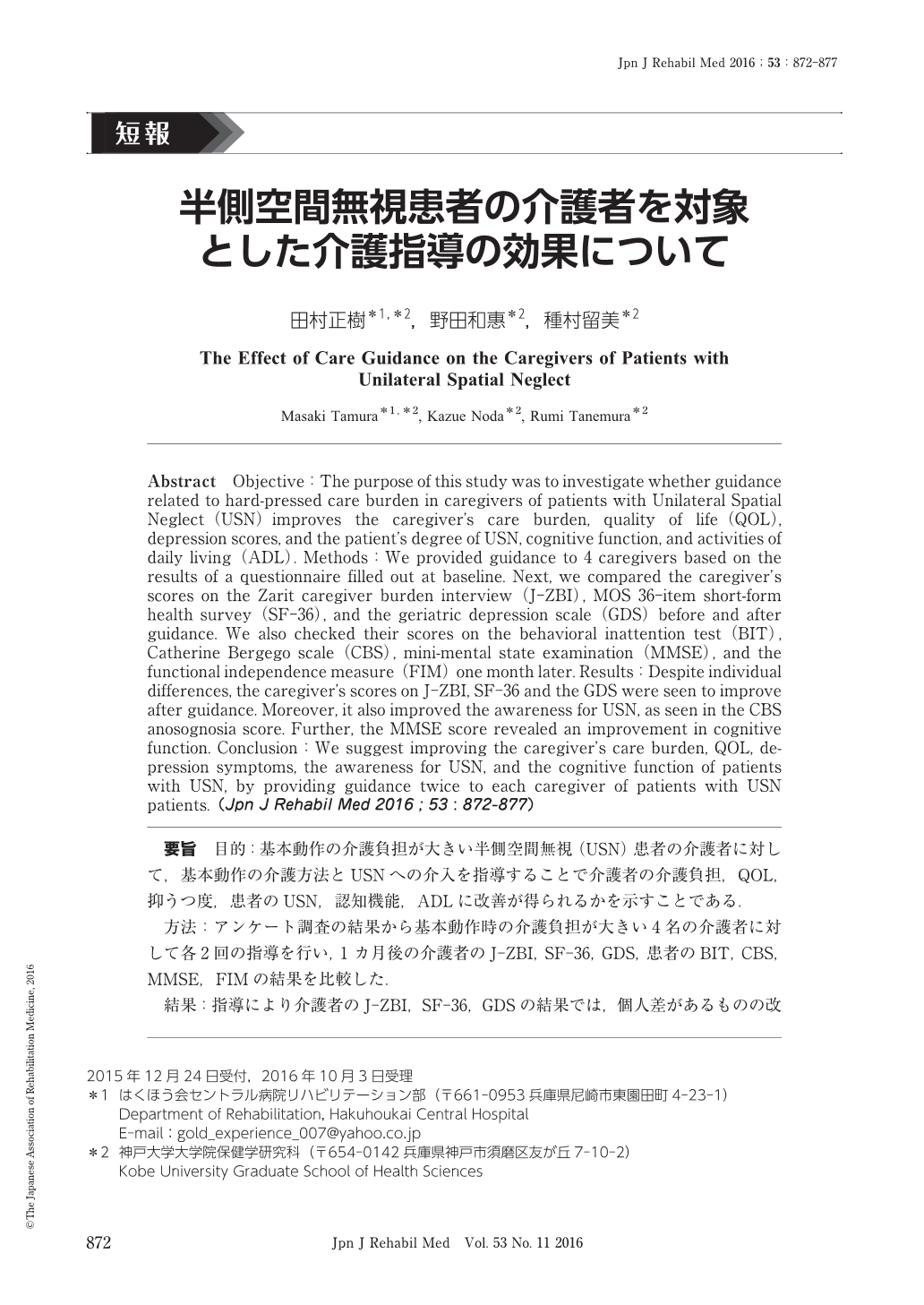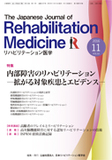Japanese
English
- 販売していません
- Abstract 文献概要
- 1ページ目 Look Inside
- 参考文献 Reference
要旨 目的:基本動作の介護負担が大きい半側空間無視 (USN)患者の介護者に対して,基本動作の介護方法とUSNへの介入を指導することで介護者の介護負担,QOL,抑うつ度,患者のUSN,認知機能,ADLに改善が得られるかを示すことである.
方法:アンケート調査の結果から基本動作時の介護負担が大きい4名の介護者に対して各2回の指導を行い,1カ月後の介護者のJ-ZBI,SF-36,GDS,患者のBIT,CBS,MMSE,FIMの結果を比較した.
結果:指導により介護者のJ-ZBI,SF-36,GDSの結果では,個人差があるものの改善を認めた.一方,USN患者に関しては,CBS病識失認得点からUSNに対する気付きに改善を認めることが示唆された.さらに,MMSEから認知機能の改善が示唆された.
結論:基本動作の介護負担が大きいUSN患者の介護者に各2回の指導を行い,毎日の介護場面やADL場面で実施することは介護者の介護負担,QOL,抑うつ度,USN患者の病識への気付きや認知機能に対して効果的な介入である可能性が示唆された.
Abstract Objective:The purpose of this study was to investigate whether guidance related to hard-pressed care burden in caregivers of patients with Unilateral Spatial Neglect (USN) improves the caregiver's care burden, quality of life (QOL), depression scores, and the patient's degree of USN, cognitive function, and activities of daily living (ADL). Methods:We provided guidance to 4 caregivers based on the results of a questionnaire filled out at baseline. Next, we compared the caregiver's scores on the Zarit caregiver burden interview (J-ZBI), MOS 36-item short-form health survey (SF-36), and the geriatric depression scale (GDS) before and after guidance. We also checked their scores on the behavioral inattention test (BIT), Catherine Bergego scale (CBS), mini-mental state examination (MMSE), and the functional independence measure (FIM) one month later. Results:Despite individual differences, the caregiver's scores on J-ZBI, SF-36 and the GDS were seen to improve after guidance. Moreover, it also improved the awareness for USN, as seen in the CBS anosognosia score. Further, the MMSE score revealed an improvement in cognitive function. Conclusion:We suggest improving the caregiver's care burden, QOL, depression symptoms, the awareness for USN, and the cognitive function of patients with USN, by providing guidance twice to each caregiver of patients with USN patients.

Copyright © 2016, The Japanese Association of Rehabilitation Medicine. All rights reserved.


